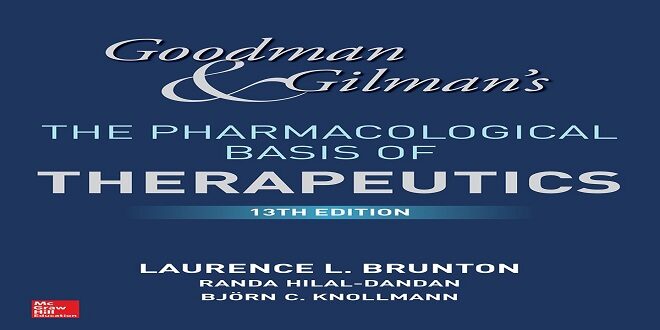Early Experiences With Plants to Modern Chemistry
The human fascination—and sometimes infatuation—with chemicals that alter biological function is ancient and results from long experience with and dependence on plants. Because most plants are root bound, many of them produce harmful compounds for defense that animals have learned to avoid and humans to exploit (or abuse).
Earlier editions of this text described examples: the appreciation of coffee (caffeine) by the prior of an Arabian convent, who noted the behavior of goats that gamboled and frisked through the night after eating the berries of the coffee plant.
The use of mushrooms and the deadly nightshade plant by professional poisoners; of belladonna (“beautiful lady”) to dilate pupils; of the Chinese herb ma huang (containing ephedrine) as a circulatory stimulant; of curare by South American Indians to paralyze and kill animals hunted for food; and of poppy juice (opium) containing morphine (from the Greek Morpheus, the God of dreams) for pain relief and control of dysentery.
Morphine, of course, has well-known addicting properties, mimicked in some ways by other problematic (“recreational”) natural products—nicotine, cocaine, and ethanol.
Small Molecules Are the Tradition
This approach was driven largely by instinct and trial and error in the past; modern drug development frequently takes advantage of determination of a high-resolution structure of the putative drug bound to its target. X-ray crystallography offers the most detailed structural information if the target protein can be crystallized with the lead drug bound to it.
Using techniques of molecular modeling and computational chemistry, the structure provides the chemist with information about substitutions likely to improve the “fit” of the drug with the target and thus enhance the affinity of the drug for its target. Nuclear magnetic resonance (NMR) studies of the drug-receptor complex also can provide useful information (albeit usually at lower resolution), with the advantage that the complex need not be crystallized
Large Molecules Are Increasingly Important
Protein therapeutics were uncommon before the advent of recombinant DNA technology. Insulin was introduced into clinical medicine for the treatment of diabetes following the experiments of Banting and Best in 1921. Insulins purified from porcine or bovine pancreas are active in humans, although antibodies to the foreign proteins are occasionally problematic. Growth hormone, used to treat pituitary dwarfism, exhibits more stringent species specificity.
Only the human hormone could be used after purification from pituitary glands harvested during autopsy, and such use had its dangers—some patients who received the human hormone developed Creutzfeldt-Jakob disease (the human equivalent of mad cow disease), a fatal degenerative neurological disease caused by prion proteins that contaminated the drug preparation.
Thanks to gene cloning and the production of large quantities of proteins by expressing the cloned gene in bacteria or eukaryotic cells, protein therapeutics now use highly purified preparations of human (or humanized) proteins. Rare proteins can be produced in quantity, and immunological reactions are minimized. Proteins can be designed, customized, and optimized using genetic engineering techniques. Other types of macromolecules may also be used therapeutically. For example, antisense oligonucleotides are used to block gene transcription or translation, as are siRNAs.
Protein therapeutics were uncommon before the advent of recombinant DNA technology. Insulin was introduced into clinical medicine for the treatment of diabetes following the experiments of Banting and Best in 1921. Insulins purified from porcine or bovine pancreas are active in humans, although antibodies to the foreign proteins are occasionally problematic. Growth hormone, used to treat pituitary dwarfism, exhibits more stringent species specificity.
Only the human hormone could be used after purification from pituitary glands harvested during autopsy, and such use had its dangers—some patients who received the human hormone developed Creutzfeldt-Jakob disease (the human equivalent of mad cow disease), a fatal degenerative neurological disease caused by prion proteins that contaminated the drug preparation.
Thanks to gene cloning and the production of large quantities of proteins by expressing the cloned gene in bacteria or eukaryotic cells, protein therapeutics now use highly purified preparations of human (or humanized) proteins. Rare proteins can be produced in quantity, and immunological reactions are minimized. Proteins can be designed, customized, and optimized using genetic engineering techniques. Other types of macromolecules may also be used therapeutically. For example, antisense oligonucleotides are used to block gene transcription or translation, as are siRNAs.
Targets of Drug Action
Early drugs came from observation of the effects of plants after their ingestion by animals, with no knowledge of the drug’s mechanism or site of action. Although this approach is still useful (e.g., in screening for the capacity of natural products to kill microorganisms or malignant cells), modern drug invention usually takes the opposite approach, starting with a statement (or hypothesis) that a certain protein or pathway plays a critical role in the pathogenesis of a certain disease, and that altering the protein’s activity would be effective against that disease
 Jobsearchdone.com Top News Share Website
Jobsearchdone.com Top News Share Website




